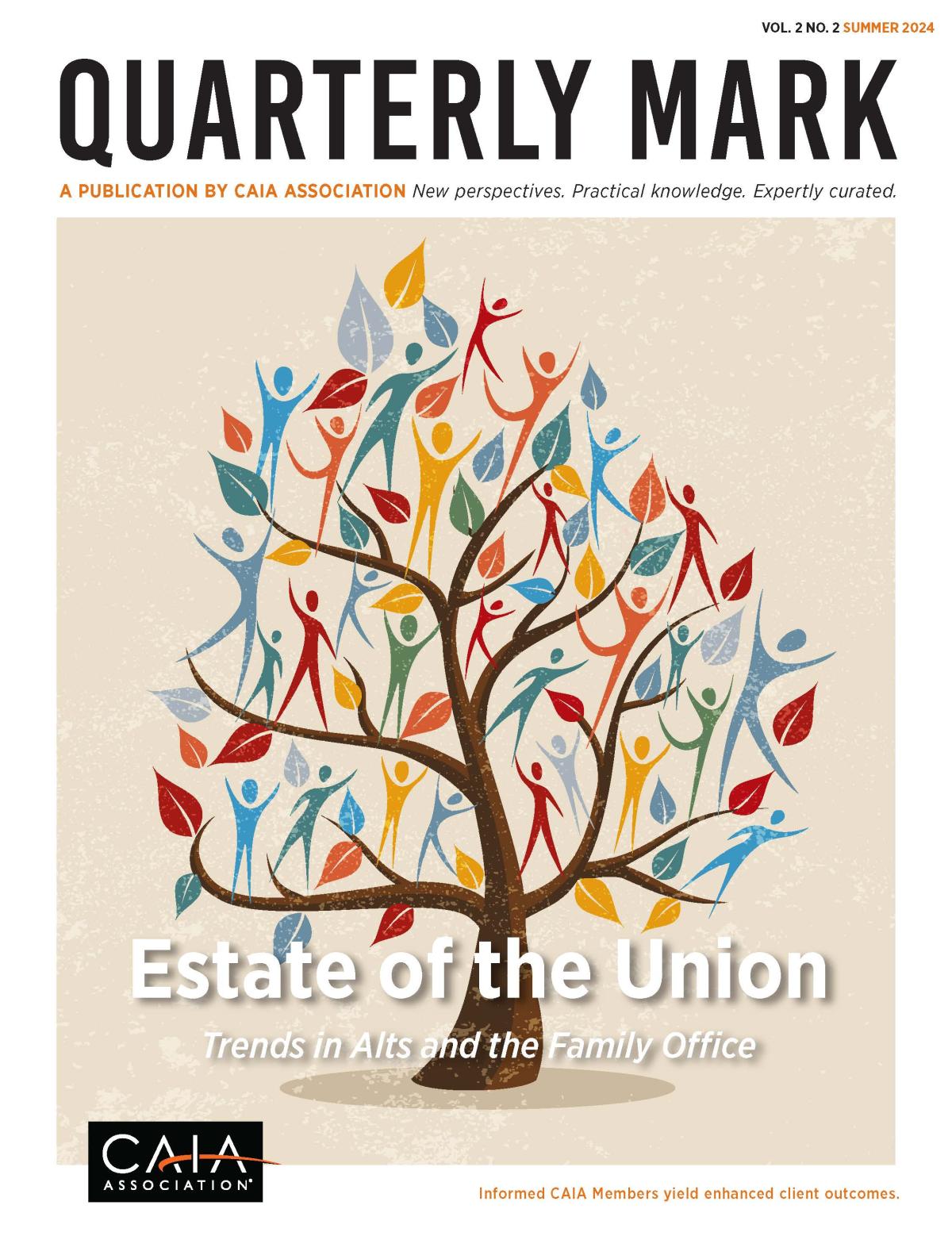By John L. Bowman, CFA, President, CAIA Association
The fragmented and secretive world of family offices is historically characterized (perhaps unfairly) by a lack of investment sophistication, concentrated exposures, unconstrained portfolio construction (“If you’ve met one family office … you’ve met one family office.”), and positions that largely reflect the passions of the family leader versus sound risk/return opportunity. Over the last decade, however, many of those stereotypes are reversing as these increasingly larger pools of capital institutionalize their processes and diversify their wealth with an eye towards multi-generational stewardship. Family offices have retained their whimsical reputation but nonetheless earned disproportional influence in the figurative halls of institutional investors. From a GP perspective, they also are a refreshing new segment for fundraising consideration given the limited bureaucracy of their investment decision-making and the near maximum allocations to private markets from traditional clients such as pensions, endowments, and foundations.
Has their golden age arrived? It depends on how they respond.
In the Summer 2024 issue of Quarterly Mark, and through the lens of this new entrant to the institutional class, we explore some of the more creative asset class dilemmas faced by this segment of investors as they look to reinvent and mature their investment offices.
Family offices have traditionally allocated much larger portions of their wealth to private market opportunities to harvest the premiums associated with these longer-dated assets and strategies. However, the complexity of the fund structure does require more care in assessing underwriting opportunities and comparing their return streams to alternatives. In the article “Unpacking Private Equity Performance”, authors Brown and Volkmann examine the impact of some modern financial engineering tactics such as subscription lines of credit, pacing, and continuation mechanisms that can overstate alpha if investors aren’t cognizant of necessary adjustments.
Wealthy families have long utilized liquidity tools like home equity loans and reverse mortgages to exploit their often large but locked up capital in real estate properties. However, real estate credit markets usually become paralyzed when liquidity flexibility is most needed. Within “Art as Collateral”, Goetzmann and Nozari suggest that art as collateral has more recently become an attractive borrowing source due to art’s uncorrelated and even countercyclical behavior and its growing acceptance as a legitimate asset class.
Cryptocurrency is a hotly debated and divisive new investing opportunity. While I’ve often parroted Franklin Templeton’s CEO Jenny Johnson in exhorting that Bitcoin is the biggest distraction to the true transformational narrative of blockchain technology, in “Is Bitcoin Enough?”, Wirth, Siegl, and Schmitt make a compelling case that Bitcoin alone would have outperformed a diversified portfolio of cryptocurrencies over the last decade. Bitcoin’s mid-teen age should provide a caution flag on overreliance on early history but its embedded scarcity, tightening volatility, and more widespread acceptance (cue the network economy power law) make it a strong consideration for long term portfolios.
We conclude with a broad overview of the thematic crosswinds that will challenge and foundationally impact family offices in the future. In “Emerging Topics in Family Offices”, Kosnitzky and Dworkin highlight several emerging themes such as talent rewards and retention, the transition from fund to direct private investing, regulatory scrutiny, wealth transfer, and cybersecurity. Most family offices are still early in attempting to address these multi-faceted challenges, but those who are proactive will separate themselves from the pack.
Access to the Summer 2024 issue of Quarterly Mark, “Estate of the Union: Trends in Alts and the Family Office” is available to CAIA Members here.
About the Author:

John serves as President for the CAIA Association, overseeing the industry leading CAIA Charter, thought leadership and content development, operations, and CAIA's Asia Pacific strategy. John has devoted over 25 years to the asset management industry to recover the narrative of the value that the investment profession bring to society. He is a staunch public advocate for market integrity, long-termism, investor outcomes, diversity, human dignity and educational standards, as necessary ingredients to building a sustainable and healthy profession. John previously served as Managing Director for the Americas for CFA Institute, a region comprised of 40+ countries from Canada, the U.S., Central America, South America and the Caribbean. Bowman joined CFA Institute in 2004 after holding several industry positions. He served as a portfolio manager at Mellon Growth Advisors (MGA), where he was responsible for portfolio construction and stock selection for the MGA International Growth and MGA Global Growth strategies. Bowman also served as a portfolio manager for the International Growth Opportunities Strategy at State Street Global Advisors (SSgA) in its Global Fundamental Strategies Group. John is a prolific writer and commentator, frequently appearing in industry and business publications such as the Wall Street Journal, The New York Times, Pension and Investments, Financial Advisor, The Independent, Wealthmanagement.com and CNBC. Bowman earned a BS in Business Administration from Mary Washington College and is a CFA charterholder.




